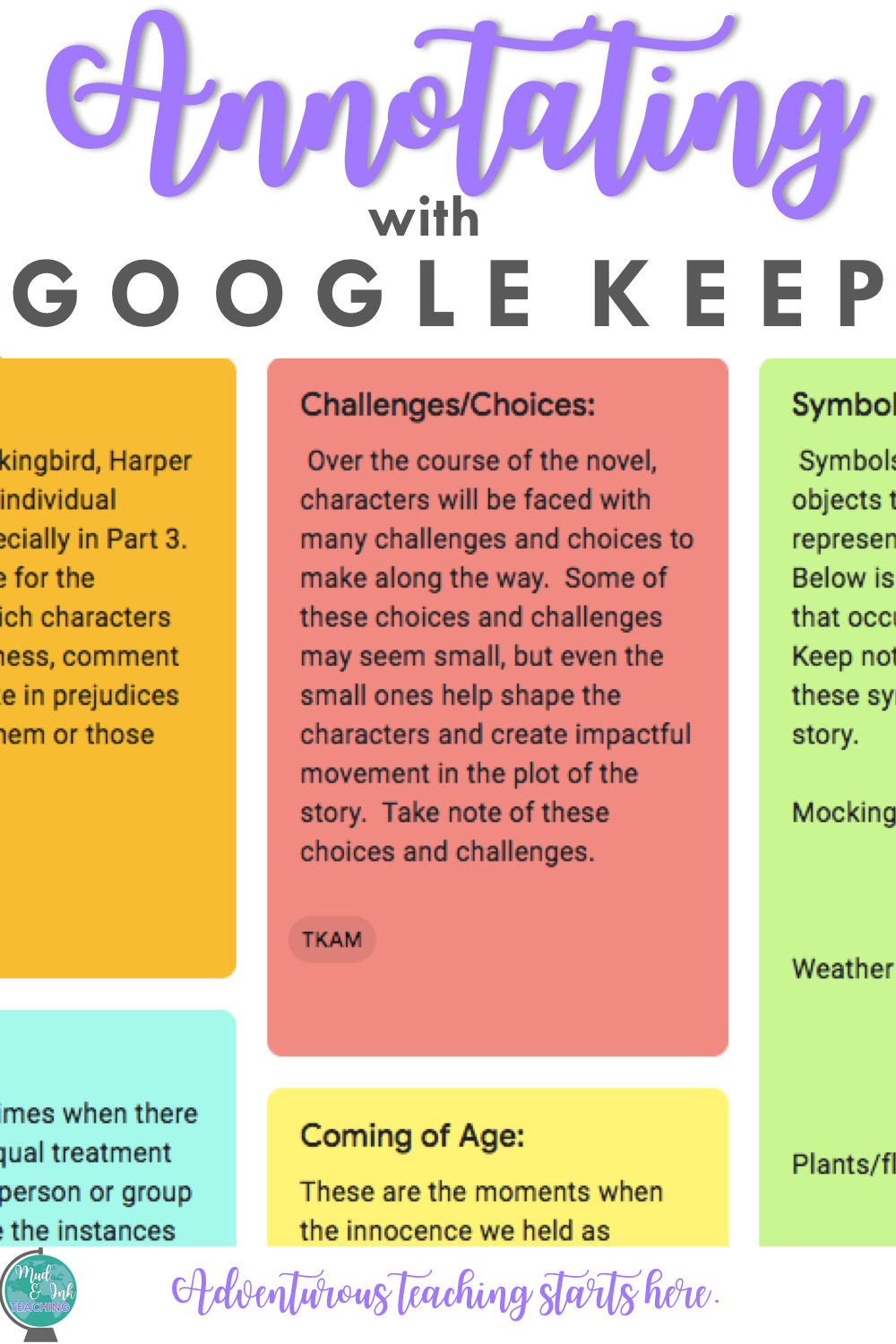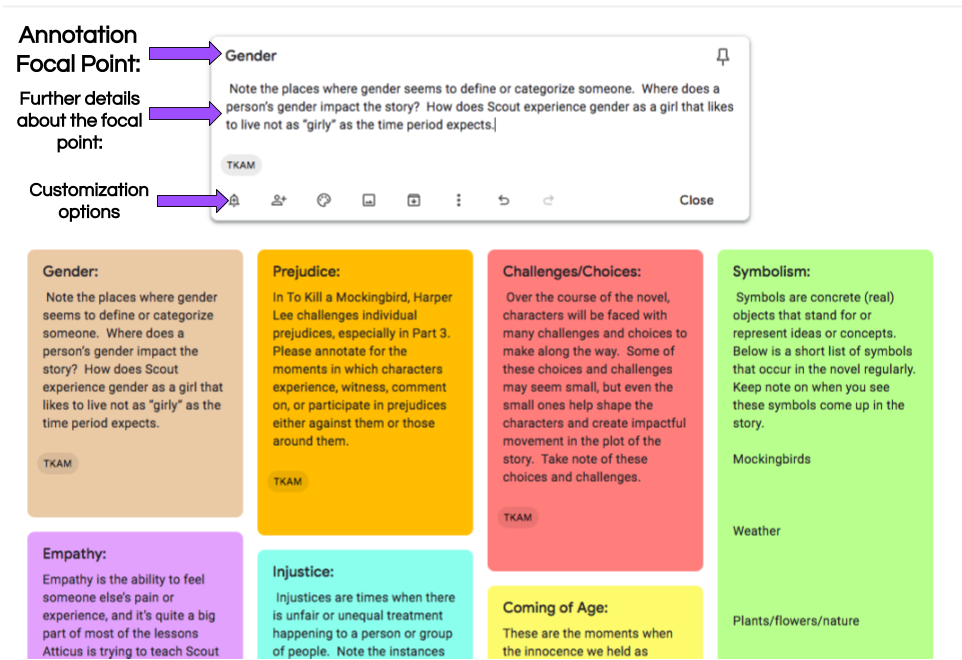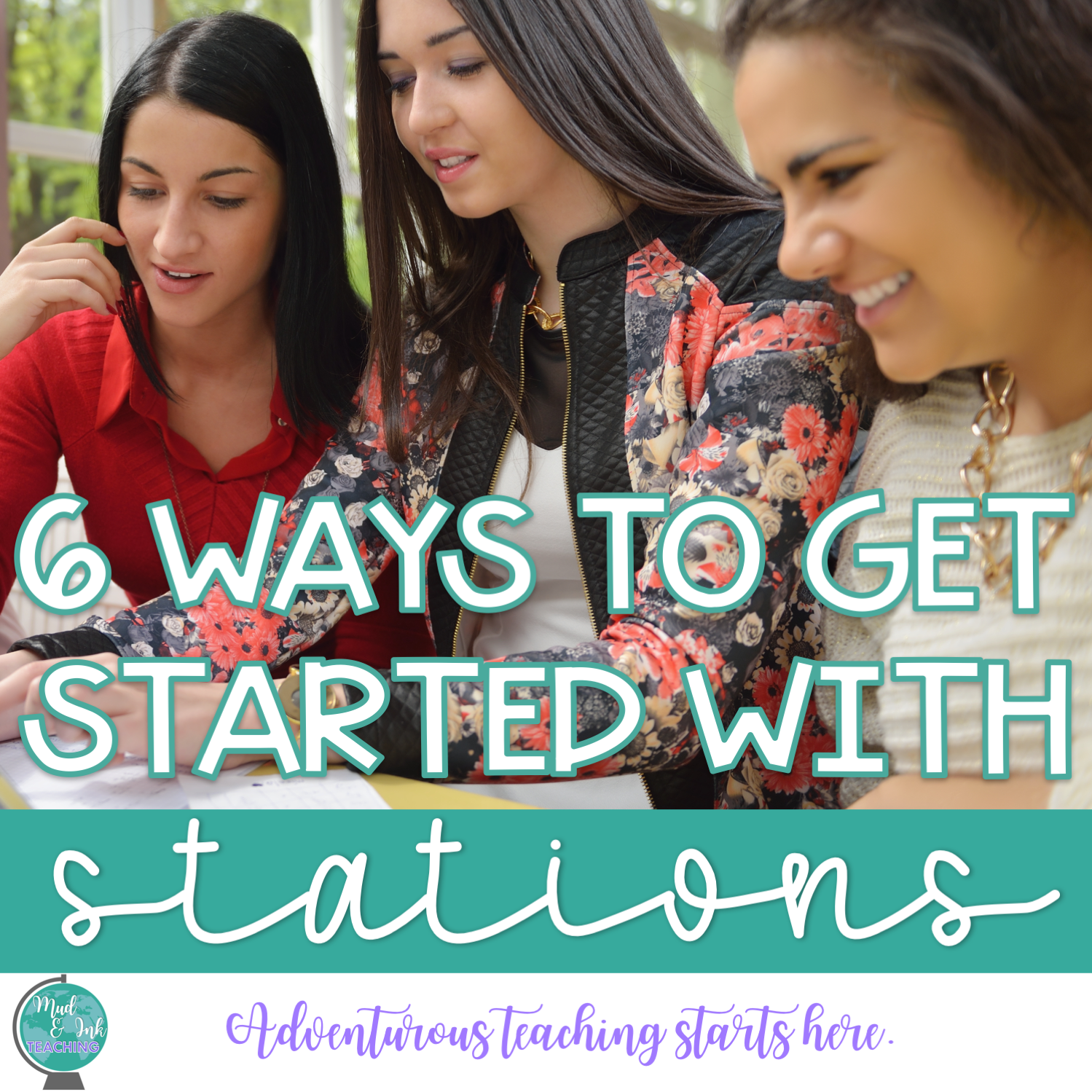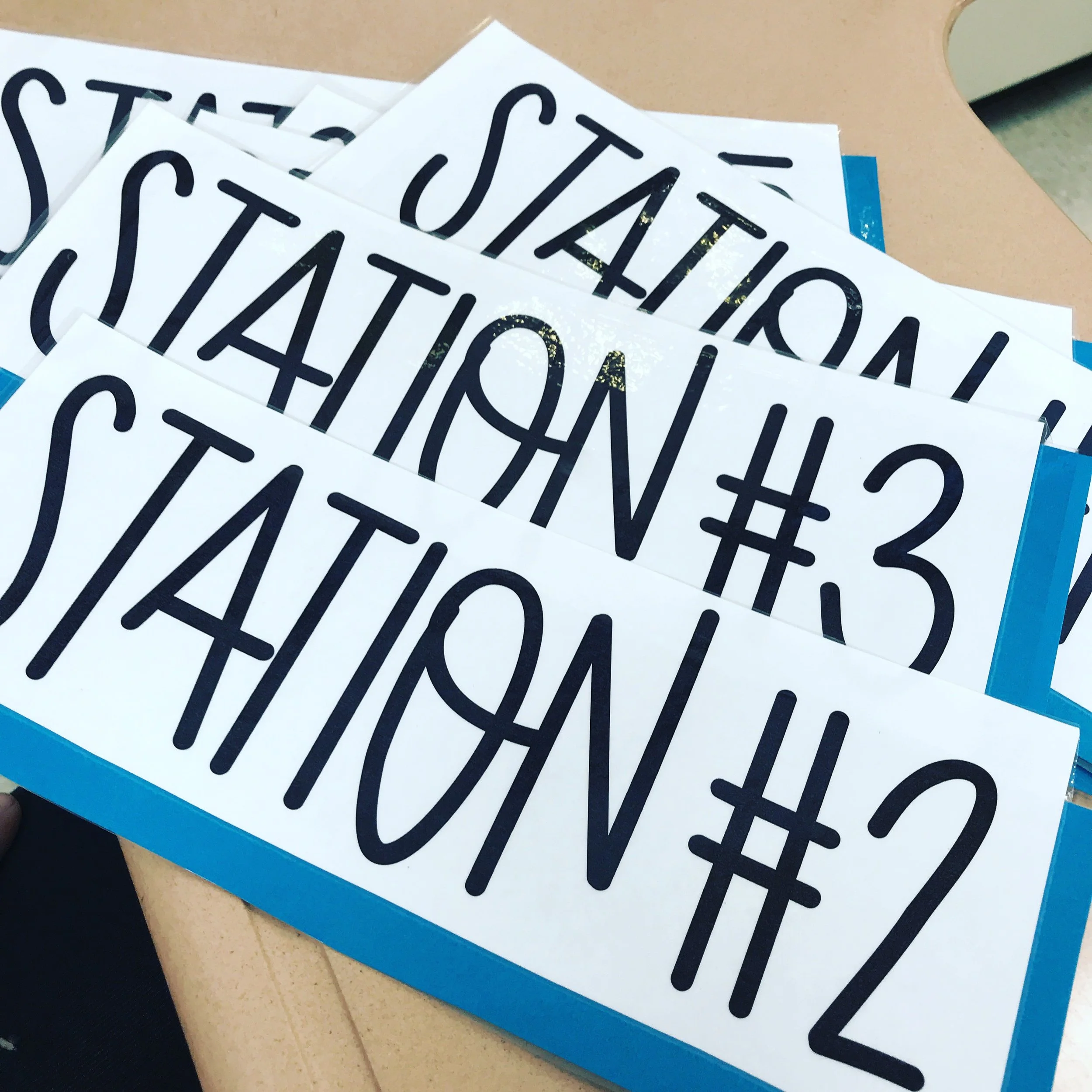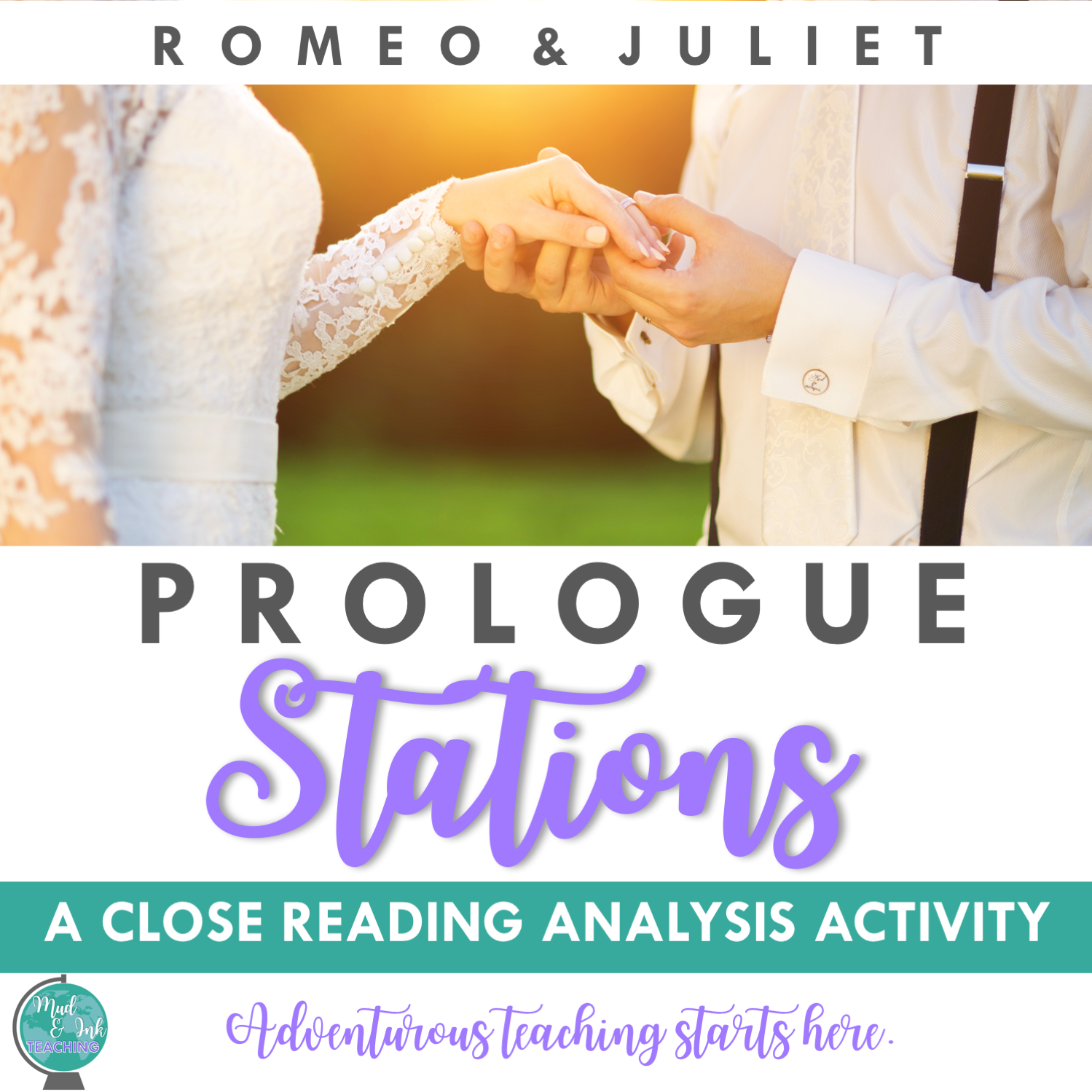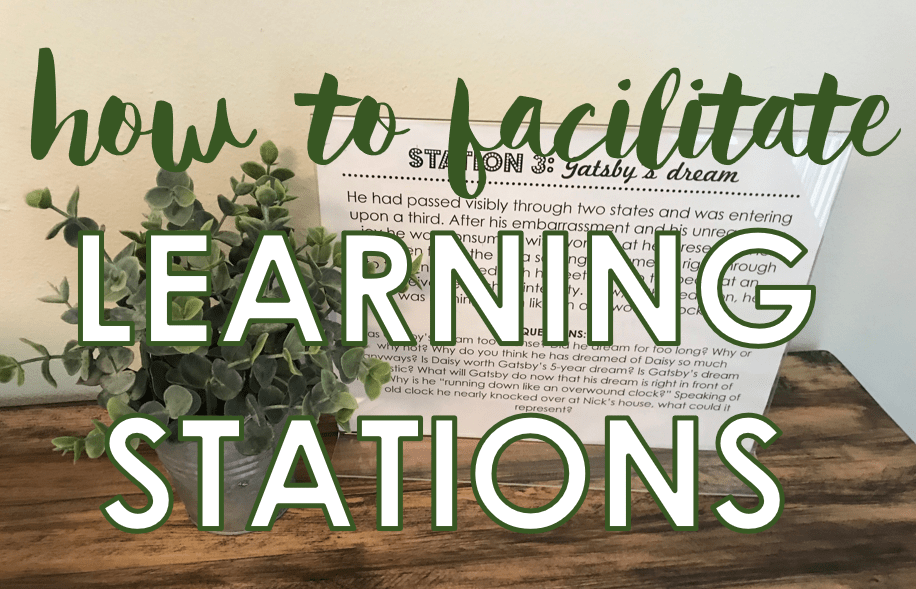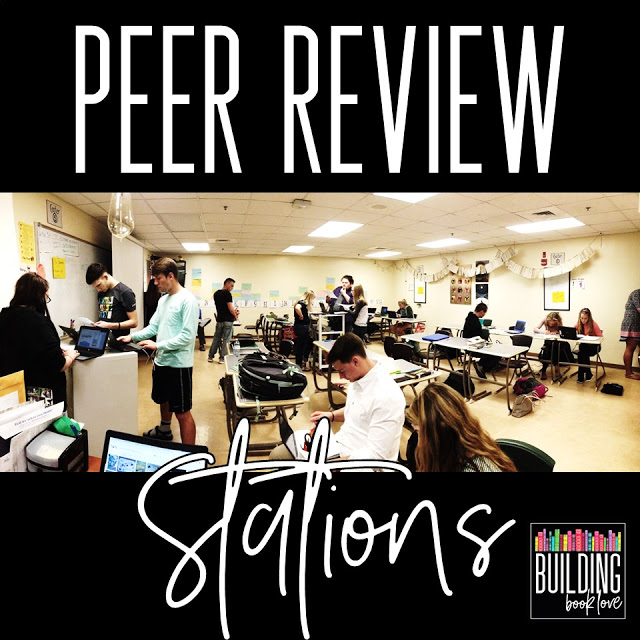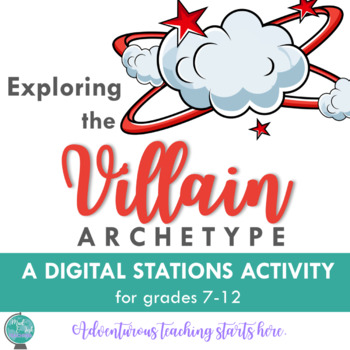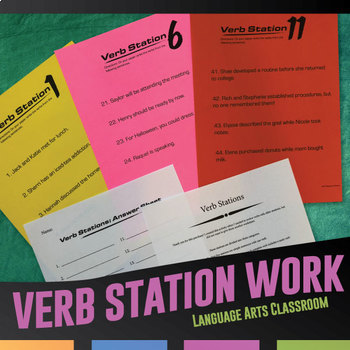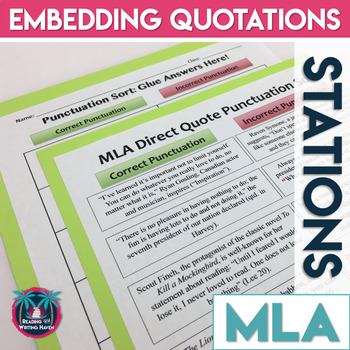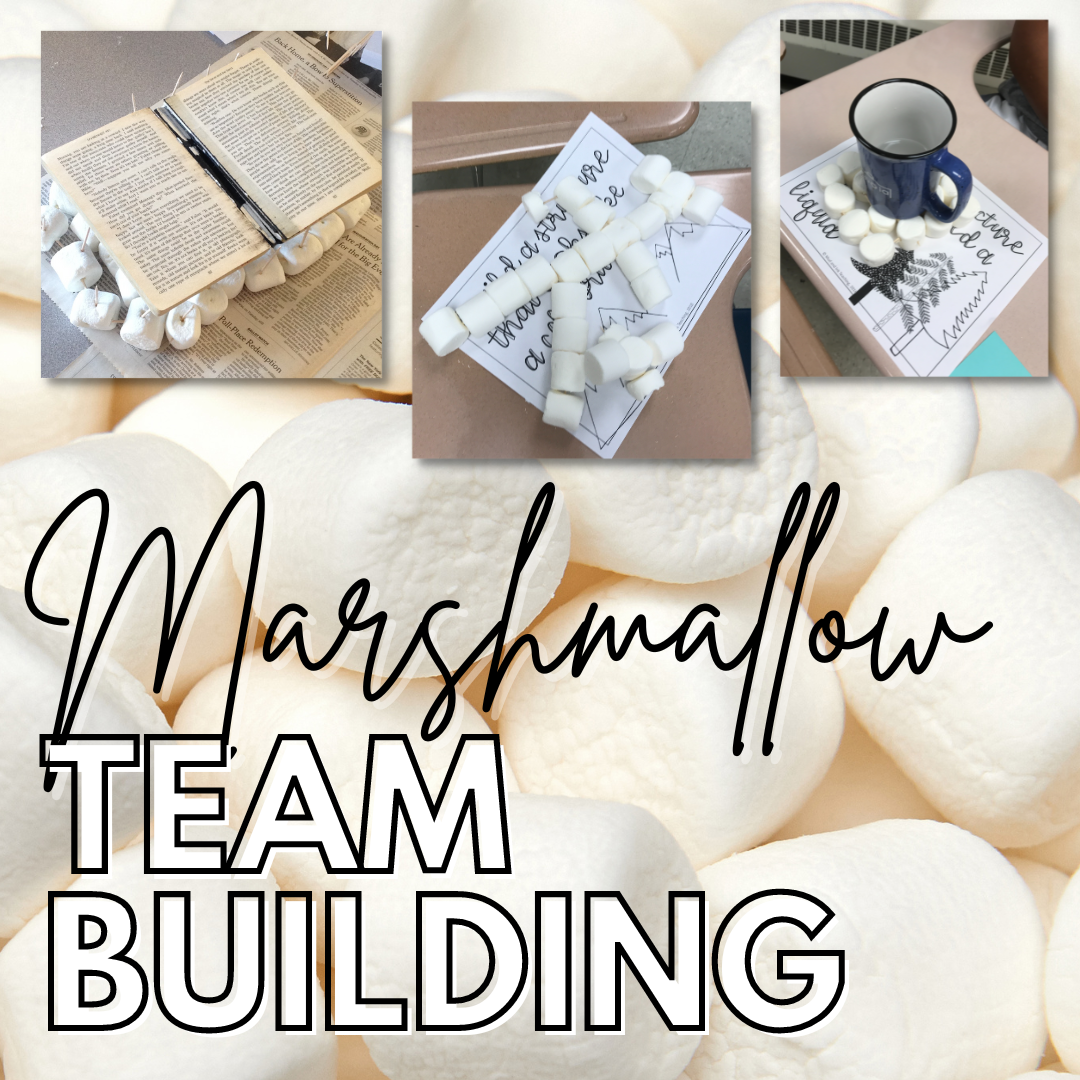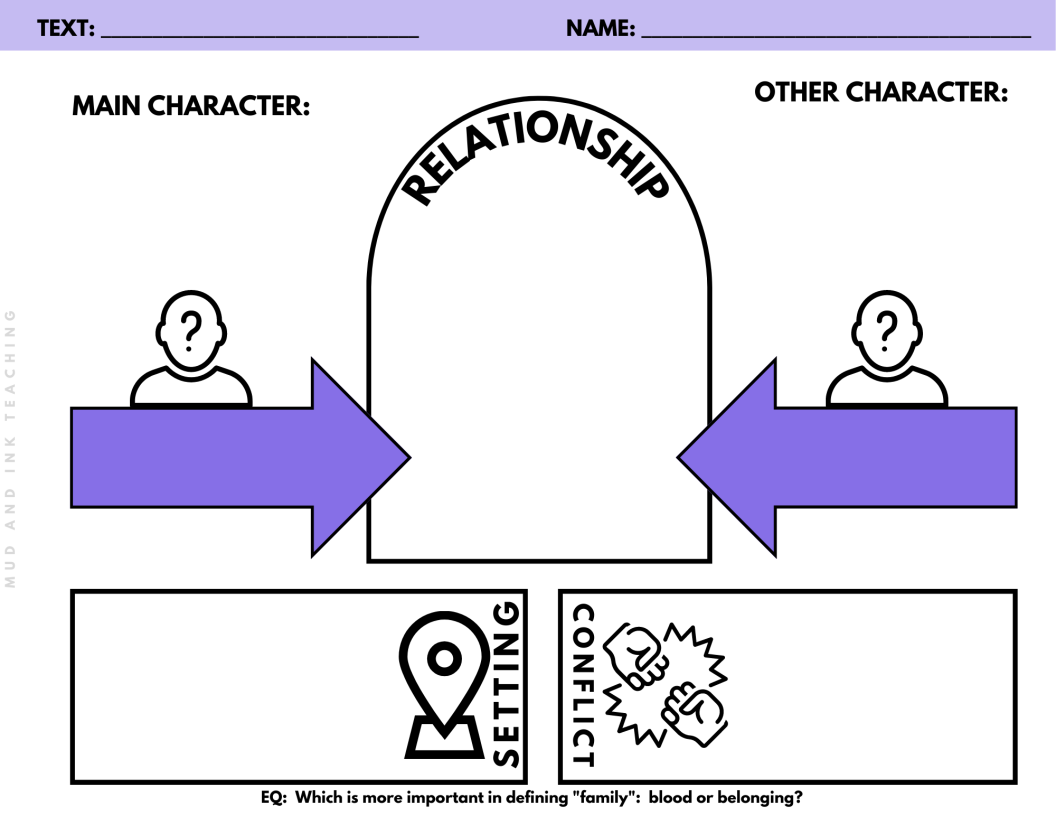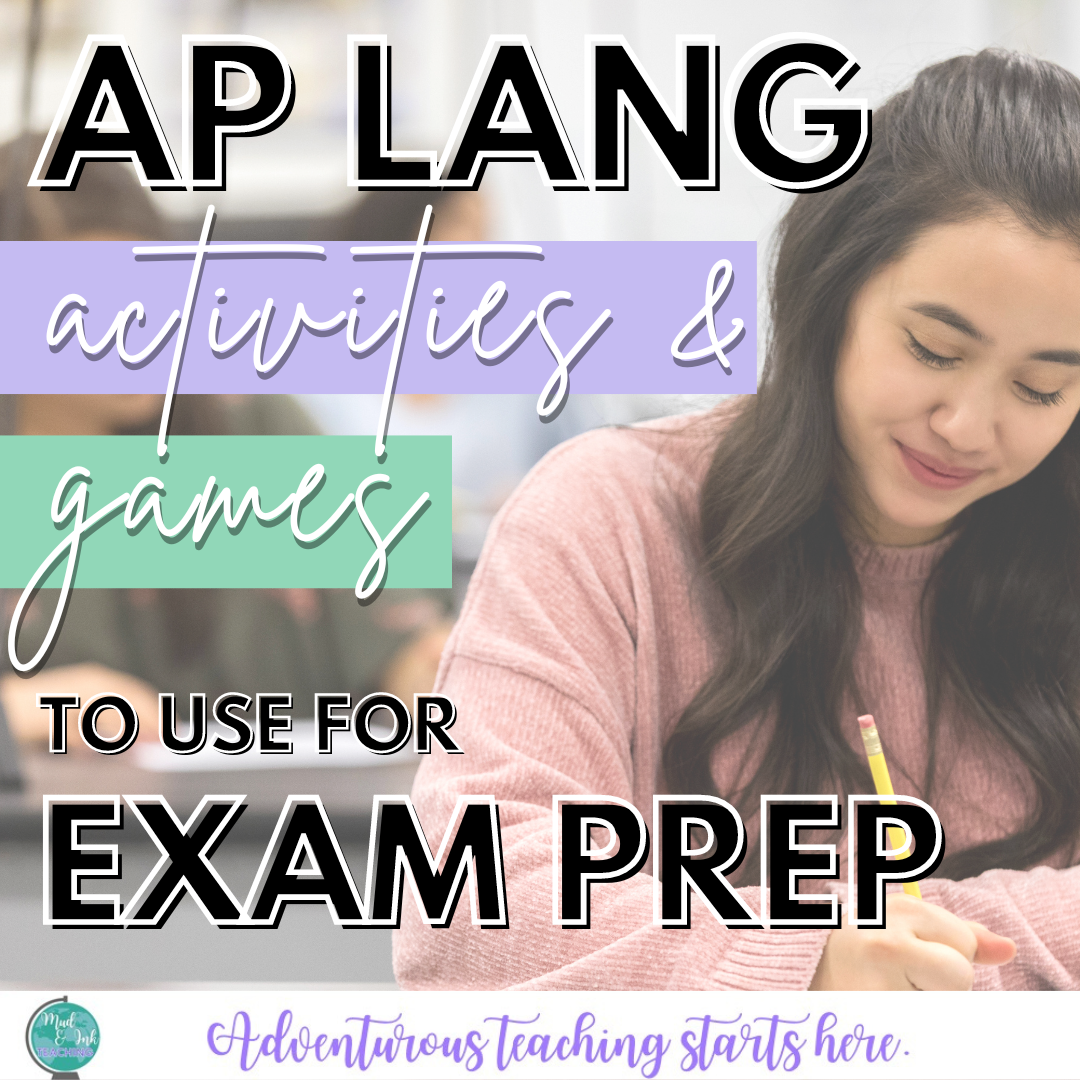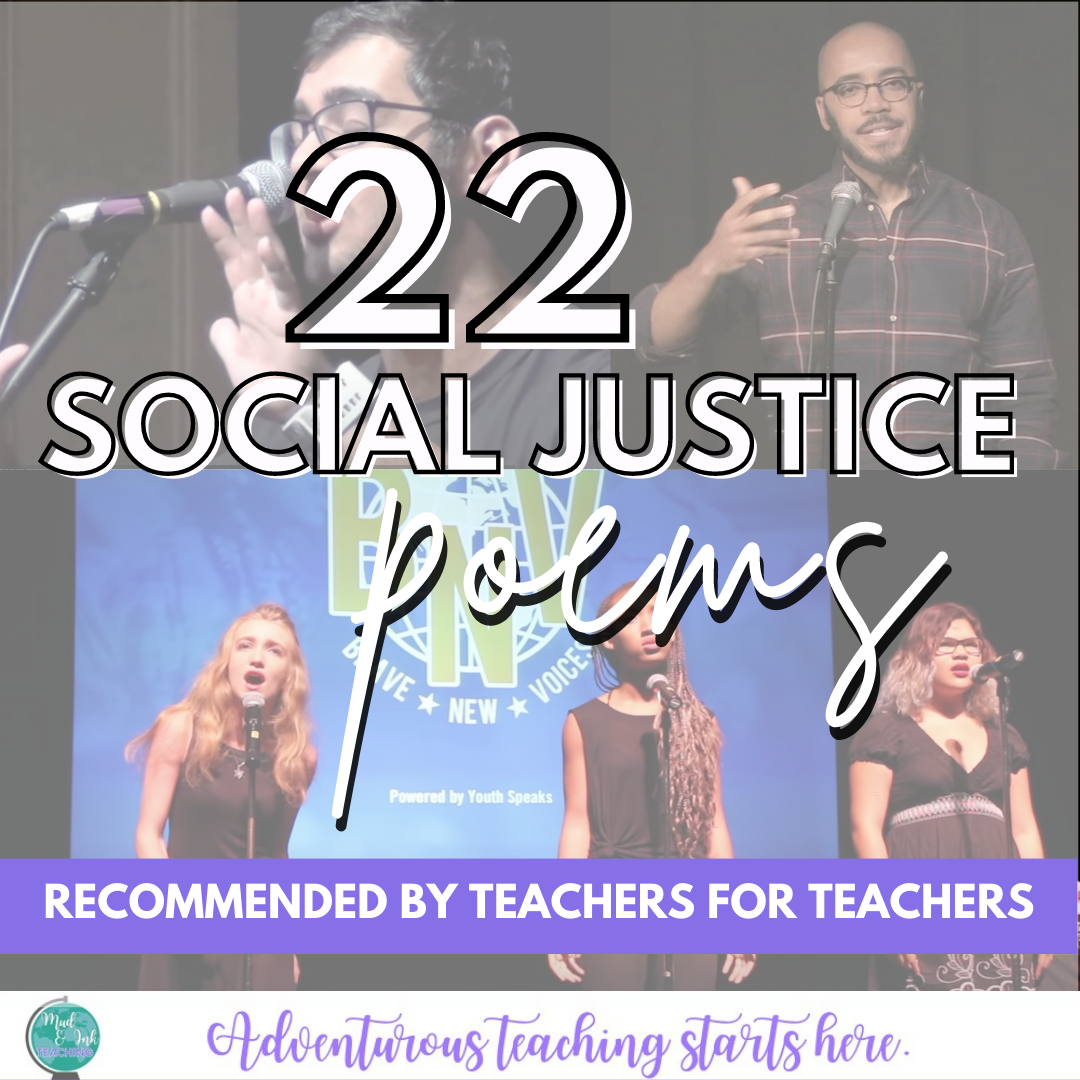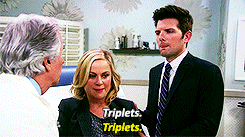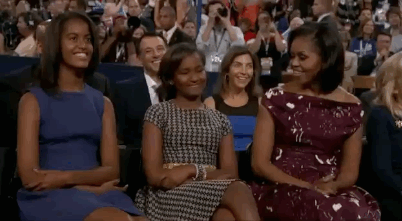
ADVENTUROUS TEACHING STARTS HERE.
Teaching Annotation with Google Keep
Over a decade of teaching, I feel like I’ve heard it all! This year, however, I feel like I’ve found a new and sustainable way of reframing how I look at annotation. Yes, it does involve some tech, but don’t be intimidated! It’s a low-tech approach and works on multiple devices.
Teaching annotation to high school students is an ongoing struggle for so many teachers. It’s one of those skills and I find myself continually reinventing ways to teach it and explore it with students. I have faced so many different roadblocks on the path to teaching annotating. Do these scenarios sound familiar?
Students can’t write in their books - they are library copies
I have three classes and only one class set of novels
Students complain about annotating taking too long
Students refuse to mark in their books
Students lose the annotation bookmark I’ve given them to focus their notes
Students “fake” their annotations just to get credit when I “grade” them
Any other good ones? Over a decade of teaching, I feel like I’ve heard it all! This year, however, I feel like I’ve found a new and sustainable way of reframing how I look at annotation. Yes, it does involve some tech, but don’t be intimidated! It’s a low-tech approach and works on multiple devices.
What is Google Keep?
Google Keep is an app I’ve used forever, but only really for personal to-do lists. It’s a sticky-note type of app that allows you to create notes, color code them, check off items on a list, and even share notes with others. Google Keep is connected to all of your other Google products (slides, drive, docs, etc.), so all it requires for your students is a Google login.
Getting Started with Annotation Focal Points
This may seem obvious, but when it comes to annotating, students should have a direct, clear purpose for doing so. Yes, it’s nice to have students mark “C” when they notice a characterization trait, but is that what you’re assessing at the end? For example, when my students are annotating in To Kill a Mockingbird, it’s for major topics (for which they will later create theme statements). On their annotation guide/handout, I tell them to focus on: coming of age, prejudice, empathy, gender roles, and symbolism. That’s it. Those are their Annotation Focal Points.
Using Google Keep to Track Annotations
Now that students have their Annotation Focal Points, they will create as many Google Keep notes as you have focal points (if you have four focal points, they’ll have four Keep notes).
Send students to keep.google.com
Make sure students are logged into their student Google accounts
On the left hand side of the screen, have students click EDIT LABELS. There, they will create a new label titled with whatever book you are studying.
Click on that new label so that it is highlighted on the left hand side of the screen. You are now creating notes under that label, so they will be nicely sorted when students need to access them later.
Where it says “Take a note”, have students copy and paste (or type) their first Annotation Focal Point into the note. The Title can just be a one-word topic and then the note can be the longer version of the focal point that you gave them.
Have students repeat this step for each focal point.
Now, their notes are ready! Every time they read or every few lessons, students can stop here to add to their notes.
Personally, I like to encourage students to annotate for general items in their books as well as these focal points. I tell the students that we are using Google Keep as a highlight reel of the BEST pieces of evidence that match up with our focal points. Good annotating means consistent interaction with the text, so I want them to practice that as well, but as we discussed earlier, sometimes, that’s just a pipe dream. Google Keep is a great alternative that offers an organized, focused approach to monitoring important concepts while reading, but it’s not the perfect solution, either.
Assessing Student Annotations
Since each student is keeping track of their own annotations, there are a few ways you could collect or assess the annotation on Google Keep.
Create an assignment on Google Classroom. Have your students:
Take a screenshot of their Keep notes and submit that image.
Copy and paste the notes they have for one of the categories that YOU select
Give students question that requires they use their notes from Keep - no books allowed!
There are lots of other ways you could assess their annotations, but these are a few that I’ve tried and liked so far. My favorite part? I will NEVER collect books to check-in annotation ever again!!
How else have you used Google Keep in the classroom? Share your strategies with us below in the comments! I’m actively using this while teaching my Great Gatsby and To Kill a Mockingbird units and loving it so far!
Don’t forget - if you love trying new ideas and getting inspired by others who are adventurous just like you, join our Adventurous Teaching Academy on Facebook!
SHOP THE MUD AND INK STORE:
10 Adventurous Teaching Ideas for 2019
Teacher burnout is a real thing. Exhaustion from the myriad demands placed on our shoulders year in and year out can make anyone question why on earth they started in this profession in the first place.
As a teacher in the US, the winter break gives me a chance to reevaluate my “why” in teaching. Why do it? Why work so hard? Why work to the point of burnout every single year? When there’s actually time to slow down and remember the answer to that question, the answer is so simple - why? Because I love watching kids learn. That’s it. It’s that simple. And when does burnout start to feel so painful? It’s when the job has become something other than dedicating time to helping students learn and experience new things.
Teacher burnout is a real thing. Exhaustion from the myriad demands placed on our shoulders year in and year out can make anyone question why on earth they started in this profession in the first place.
As a teacher in the US, the winter break gives me a chance to reevaluate my “why” in teaching. Why do it? Why work so hard? Why work to the point of burnout every single year? When there’s actually time to slow down and remember the answer to that question, the answer is so simple - why? Because I love watching kids learn. That’s it. It’s that simple. And when does burnout start to feel so painful? It’s when the job has become something other than dedicating time to helping students learn and experience new things.
In 2019, I’m excited to announce the launch of a new social media meeting place for teachers - The Adventurous Teaching Academy. It’s a Facebook group and safe space where teachers can ask questions, share experiences, and most of all, challenge each other to try new teaching adventures in their classrooms. Here is where we kill the burnout and stay invigorated - by focusing on new and exciting ways to watch students learn!
To kick off the new year and send you back to your classrooms with a sense of excitement and anticipation, I’ve collected some adventurous teaching ideas for you to consider. Here’s how I suggest you get started…
#1: Overhaul Your Curriculum Maps
There’s nothing more refreshing than taking the time to seriously overhaul and rethink your curriculum map with your team. This can seem like a daunting task, but once the map is strong and it works, you’ll feel refreshed and focused on the FUN in teaching rather than the chore of day-to-day planning. Start here with my free curriculum map template. Sit down with your team and sketch out what is working so far. To read more about making your essential questions stronger, read this blog post to get started!
#2: Try an Escape Room
They can take a bit of work to set up and are a bit hard to design on your own, but once you’ve tried an escape room, you’ll be dying to make or buy a TpT one for every novel you teach! My friend Abby from Write On With Miss G loves them too. She says, “Escape rooms are an adventurous teaching must-try. They encourage collaboration among students, get students up and moving, and bring content to life. An escape room is comprised of clues that lead students to tasks or challenges. Once completed, each task generates a code that allows students to advance to the next challenge. Escape rooms can be paper and pencil, entirely digital, or blended.” Be sure to check out Abby’s escape room for Poe’s “The Masque of the Red Death” or mine for “A Raisin in the Sun.”
#3: Transform Your Classroom
Last year, The Wild Card took teacher book clubs by storm and one of my favorite takeaways from reading it was the excitement that is possible through classroom transformations. Ashley from Building Book Love sums up the classroom transformation experience beautifully. She says, “Here’s another way to be adventurous in English class: take your students on a journey without even leaving your classroom! Though some might view classroom transformations as a little elementary, secondary students benefit from the novelty and engagement just the same as younger students. The best part is that it doesn’t take a lot of effort or money to make your next lesson look more adventurous; take a look at these simple and economical transformations: Lord of the Flies One Dollar, One Hour Transformation, Great Gatsby Party Decorations, Hygge in the Classroom. ”
#4: Experiment with Podcasts
Nothing says adventurous more than trying a completely new medium in your ELA class. According to Ashley from Building Book Love, “podcasts are the fastest growing form of media, and if you can introduce students to this new digital platform, you can potentially transform their potential of continuing life-long learning. To get started on your podcasts-in-the-classroom adventure, check out this post filled with tons of ELA podcast pairings. “
#5: Rethink Grammar Instruction
When I chatted with Melissa from Reading and Writing Haven, she reminded me that making grammar adventurous is important. Why? Adventurous lessons engage students, and...let’s face it. Grammar lessons can use all the zest they can get. Next time you review grammar concepts, try playing truth or dare. Or, use captivating narrative leads from young adult literature as mentor sentences. Additionally, Lauralee from Language Arts Classroom noted that no matter what, grammar instruction cannot begin and end with worksheets! She recommends connecting grammar to the rest of your ELA content and get students discussing grammar with their peers. You might find luck with mentor sentences or verb stations.
#6: Take Students on a Virtual Field Trip
If you really want to bring the setting of your next novel to life, try using a combination of Google Maps and Google Instant Street View to create a virtual field trip. Abby from Write On with Miss G showed me that maps will allow you to plot points for setting or a character’s journey, while Street View will show students 360 views! Tie this to the standards by having your students create literary postcards to analyze setting, point of view, characterization, and more. If you’re planning on teaching Shakespeare anytime soon, you might take a look at this Virtual Field Trip to London that preps students in his background and life story. Students will get their very own passports, book hotel rooms, flights, and travel all around London learning about The Bard and about travel itself!
#7: Consider New Assessment Strategies
First and foremost, hop on this Pinterest board for an ever-growing list of assessment strategies for high school and middle school ELA. I keep it as fresh as I can with new ideas every week! Then, once you’re all set on Pinterest, why not think about instituting conferencing with students as a new assessment adventure? According to my friend Amanda from Amanda Write Now, this is an adventure worth taking. Conferences are short conversations with your students as they work. It is an easy way to differentiate your instruction too. Learn more about conferencing in this article. Another way you can implement conferences is with writing partners. Students can support each other in powerful ways too. Once you get these conference conversations going in your classroom the adventure can begin!
#8: Refresh Your Approach to Reading Instruction
Assigning reading? Annotation is not the only way to help students process course content. Melissa recommends you try asking them to close read with color. Each time students read, they pull out a new layer of meaning, and each layer of meaning is represented on a Post-It with different colors. Read more about this adventurous teaching idea here. You may also be interested in trying (two great blog posts here and here!), which are a fresh way to capture snippets of how students connect with a text. Lauralee is a strong believer in trying a reading aloud with your high school students. They will enjoy it! You will have the opportunity to model your thought processes as you read and share images the reading sparked for you. Not only will you be sharing fiction and nonfiction, but you will also be building classroom community.
#9: Commit to Movement
Keeping students actively engaged is something that will change the environment and learning experience in your classroom dramatically. For me, that journey all started by incorporating stations at the start of pretty much every novel. Then, I got good at them and started using them in other unique ways during a unit. Either way, here’s a great blog post to help you get started with stations. Beyond stations, I love this blog post that features ten ways to bring movement to your ELA classroom - it’s a great read!
#10: Join the Teacher Social Media Movement
My best ideas and the encouragement I need to try new things comes almost entirely from my social media teacher circle. My colleagues are amazing, don’t get me wrong, but sometimes we just need to be real people with those that we work with. With the teacher-insta community, we can be nerdy teachers 24/7! My favorite platform is definitely Instagram. I’m also so excited to have recruited many Instagram friends to join our new and growing Adventurous Teaching Academy group on Facebook. No matter where you go, find an online community of teachers and plug in. Find your like-minded teacher soulmates and let them encourage you! So here’s where you start: with these incredible women who contributed brilliant ideas to this blog post!
Thank you to Abby, Ashley, Amanda, Melissa, and Lauralee for your contributions to this post. Make sure you check out each of these fabulous teachers on Instagram! There, you’ll find more of their content and links to their websites and blogs.
Tell us, which adventurous teaching idea are you excited to try this year? Share in the comments!
MUD AND INK TEACHING RESOURCES:
"How to Be A Person" A Spoken Word Poem to Reset Your Classroom Culture
Whether I’m starting a brand new school year, returning after winter break, or even just starting a new quarter, there’s always this itch in my gut that tells me to take a breather on those first few days together to regroup and reset our classroom culture and community. It’s vitally important to take the temperature of your classroom - has it been feeling toxic lately? Are students there to be the best versions of themselves? Are we having fun but not working hard? Are we working really hard and don’t know each other at all?
Whether I’m starting a brand new school year, returning after winter break, or even just starting a new quarter, there’s always this itch in my gut that tells me to take a breather on those first few days together to regroup and reset our classroom culture and community. It’s vitally important to take the temperature of your classroom - has it been feeling toxic lately? Are students there to be the best versions of themselves? Are we having fun but not working hard? Are we working really hard and don’t know each other at all?
These, among many others, are questions that keep me up Sunday night before starting anew. In search for a solution, I turned to my BFF poetry and here’s what I have come up with.
SHANE KOYCZAN.
He’s brilliant. He’s engaging. He speaks directly to the hearts of students (and adults for that matter!). My classes have seen “To This Day” (his most famous work by far!) about a billion times, so I went in search of something else he had that just might do the trick. And then I found it. “How to Be A Person”.
I haven’t found the text published anywhere, so I set to work copying this YouTube video into a Google Doc (which I can’t share because I don’t own the copyright). I gave it to my students and we watched and discussed. That was the first time through. Here is a more experienced version of a lesson plan you could try with your kids. For me, this is best used at the return of winter break, but as I said earlier, it can be used anytime you need to hit that reset button and refocus your class on their WHY.
OPENING:
I like to start with a little listing exercise to begin this lesson. Listing is easy, engaging, quick, and is a form of prewriting that really helps students when they try to compose their own pieces later on in the lesson.
5 in 5 (5 Lists in 5 Minutes)
MINUTE 1: List 5 things that annoy you about other people’s behavior in this class/school/hallways/pep assemblies/cafeteria
MINUTE 2: List 5 academic things you are proud of from last semester/last year
MINUTE 3: List 5 personal things you are proud of from last semester/last year
MINUTE 4: List 5 ways you could easily improve your own life
MINUTE 5: List 5 ways you could easily improve the lives of the people around you
THE POEM
Whenever we study poetry, my class works with a framework that I designed in my master’s program called The Big Six. Today’s lesson focuses mainly on two of these six elements: tools and theme.
Make sure that you’ve previewed the poem ahead of time (there are a few lines that you may or may not include/show to your students depending on their grade/maturity level).
If possible, hand students a hard copy of the poem to annotate as they watch and listen to the video a few times.
Watch and enjoy the video once and be casual about it. Ask questions around content, impressions, favorite lines, etc.
Send students in for a second, closer look. Stanza by stanza, I have students try to identify one MAJOR poetic device/technique at work. After watching and reading the poem a second time, I’ll take hands raised for any stanzas that students think they have encountered a “showcase technique”
For any remaining stanzas that we can’t identify on the spot, I’ll assign students to think, pair, share about those. During this time, I’ll filter around the room facilitating discussions about the things they’re noticing. Depending on the level that you teach, you might scaffold this experience with a word bank or some kind of structure that helps students use the kind of language that you’re looking for. Here’s what we usually find and discuss for this poem:
Stanza 1: Metaphor
Stanza 2: Repetition
Stanza 3: Anaphora
Stanza 4: Cause & Effect
Stanza 5: Listing
Stanza 6: Metaphor
Stanza 7: Alliteration
Stanza 8: Powerful Diction
Stanza 9: One-Word Sentence
Stanza 10: Visual Imagery
Stanza 11: Personification
Once we have found these techniques, we then work through what each of the techniques reveals. How does personification demonstrate the speaker’s message? What about repetition? As we look through each technique, what themes and messages are emerging about being a person? Does Koyczan qualify whether or not he wants to be a “good” person? Why or why not? (As you can see, the questions just start to write themselves after a while!) . I don’t spend a long time analyzing the poem, but just enough that students have an engaging discussion
TIME TO WRITE
Now comes my favorite part - the part where students WRITE THEIR OWN. You can structure this as strictly or loosely as you’d like, but so far what’s worked for me (I try to keep this whole lesson down to one class period and a homework assignment), I have the students try a three stanza imitation. Each of their three stanzas uses a different technique that Koyczan implemented in his poem and all of their poems are also titled “How to Be A Person” and roughly follow the same thematic approach. Here is a student sample (used with permission and changed name):
How to be a person!
By Jasmine (10th grade, ELL, double block ELA support)
One: Be like the world, Strong even if you’re ugly on the inside. Be strong because if you aren’t you won’t be able to succeed.
Two: Be like the clouds, cry if you have to because pain inside, will kill you. The clouds cry too!
Three: Be like the wind, invisible to those who don’t like you so that you can blow on their faces to let them know that you aren’t weak like they thought you were.
Four: Be like the sky, blue so that others who are younger admire you, so that others look up to you, and show them that you can achieve what you want.
Five: Be like the doors, Open just in case someone wants you to let them in, but if you feel like the that person is not worth your time and if you feel like that person doesn’t treat you the right way don’t let them in.
Six: Don’t be like the planet ‘Pluto’ far far away so that no one will notice you, because one day they will forget you. Get Closer to the world don’t fear to be wrong.
Seven: Don’t be like the grass, on the ground so that everyone who walks would always step on you with their dirty shoes. Stand up from there!
Did you try this lesson with your class? I’d love to hear about it! Leave a comment below and let the Mud and Ink community know what you did and how it worked! Also, remember to tag me on Instagram @mudandinkteaching!
RESOURCES FOR YOUR ELA CURRICULUM
6 Ways to get Started with Stations
When I first started teaching, I remember trying so many different ideas all the time in my classroom. It was exhausting running a new small group scenario or differentiation strategy several times per week, and over my many years of teaching, I’ve come to master a handful of strategies that are versatile and work EVERY time (at least NOW they do!). For me, learning stations are the way to go. I’d say at least once a week, I have my students engaging with content through a learning stations setup and I love it.
GETTING STARTED WITH STATIONS IN YOUR ELA CLASSROOM
When I first started teaching, I remember trying so many different ideas all the time in my classroom. It was exhausting running a new small group scenario or differentiation strategy several times per week, and over my many years of teaching, I’ve come to master a handful of strategies that are versatile and work EVERY time (at least NOW they do!). For me, learning stations are the way to go. I’d say at least once a week, I have my students engaging with content through a learning stations setup and I love it.
I rounded up some of my favorite learning station resources and talked to a few of my favorite ELA teacher friends to help you get started and inspired in your own classrooms - take a look at all of these goodies!
Permanent Station Signs
I use stations so much that I found a quick and easy way to make sure that they’re always ready for implementation - low prep and quick organization! Pick out a cute font, make signs for your stations (I usually use about 5-6), back your signs on card stock, and laminate! I hung these signs in my room where I usually tend to send students. Now, my kids know where to go every time I launch a stations activity.
2. Peer Review Stations - Interactive Bulletin Board
Have you guys met Ashley from Building Book Love? She’s not only a talented teacher, but a dear friend. I had to ask her about her peer review stations and here’s what she had to say:
“I love stations, but they can take a while to set up. That’s why I use the same set of peer review stations every time we do an essay. These work to improve essays before they get to me and allows me to give one-on-one feedback to each student before his or her final essay is due.
3. Annotation Stations
When I introduce the Prologue for Romeo and Juliet, instead of having students annotate as a whole class, I send them to stations! At each of the stations, the students close read and examine one specific purpose of the prologue in one highlighter color (i.e. pink highlighting for all of the sonnet features). Then, when the students rotate to the next station, they change highlighter colors and change annotation focus. By the time we come back together as a whole class, every student has had the chance to think, discuss, read (and reread) the prologue multiple times. We have a rich discussion involving everyone, not just the kids who always raise their hands first.
4. MLA Research Stations
My friend Melissa at Reading and Writing Haven loves learning stations, too! Here’s what she recommends trying in your classroom:
Research shows that direct instruction, when used appropriately for the age group, has great benefits. Still, when I’m teaching a complex topic, students need a lot more practice and exposure than they can get through a short lecture or a worksheet. Some concepts lend themselves really well to learning station approaches because they are multi-faceted, and they need to be studied from various angles. One of my favorite learning station lessons is for MLA research skills. I give students various scenarios, and we look at in-text citations as well as embedding quotes in essays in ways that move them from a basic level to deeper understanding. It’s interactive, and students love it!
5. Grammar Stations
My friend Lauralee at Language Arts Classroom is a grammar guru - no joke. Here’s how she incorporates stations into her grammar lessons:
“Learning stations provide huge benefits for grammar lessons. Teachers can see individual struggles and clarify misunderstandings as they rotate through stations. Check out grammar stations and other alternatives to the grammar worksheet and see an example here!”
6. Advice from The Stations Queen: Write On with Miss G!
If a crown for Stations Queen was in existence, I think all of Instagram would hand it over to Miss G! Abby has been using stations to replace all kinds of old school teaching practices, and when I asked her why she loves stations so much, here’s what she had to say:
“Stations are a staple in my high school ELA curriculum, but I especially love using them during novel units. I’ve ditched my old pre-reading PowerPoints in favor of stations to introduce literary movements/historical context for all of the literature we read. Stations are also perfect for avoiding the dreaded packets of chapter questions and breaking up the monotony that can sneak up during novel units if you’re not careful. You can even use end-of-novel learning stations to wrap up key discussions on symbolism, character development, theme, author’s purpose, and more.
Lucky for you, I have a series of posts all about learning stations, so feel free to check out my blog for even more tips and tricks:
10 reasons to implement learning stations in the secondary classroom
How to facilitate successful learning stations in the secondary classroom
If you are ready to get started with using stations in your ELA classroom, check out Miss G's learning stations for ANY text! These standards-aligned learning stations are engaging way to wrap up any novel unit and challenge your students to collaborate and critically think while practicing literary analysis skills.
SHOP MY FAVORITE STATION ACTIVITIES:
My 9 Favorite Fictional Moms {and one real one, too!}
#MomLife is new to me this year, so this will be my very first Mother’s Day! The journey through motherhood has already (in just five and a half months!) surprised me with a joy that I could never capture in a sentence.
To celebrate, I’d like to share my list of my FAVORITE Fictional Moms. These moms span from childhood picture books to blockbuster hits, from traditional mother figures to nannys and caretakers. Here are my favorite fictional moms and how they exemplify and celebrate the real moms in our lives.
#MomLife is new to me this year, so this will be my very first Mother’s Day! The journey through motherhood has already (in just five and a half months!) surprised me with a joy that I could never capture in a sentence.
To celebrate, I’d like to share my list of my FAVORITE Fictional Moms. These moms span from childhood picture books to blockbuster hits, from traditional mother figures to nannys and caretakers. Here are my favorite fictional moms and how they exemplify and celebrate the real moms in our lives.
Love these mammas as much as I do?
Grab this free download! These are easy print-and-write cards for your students to write to their moms. Each card contains a famous quote from each of these incredible women!
1. Miss Honey - Matilda
Jennifer Honey has a special place in my memory of childhood reading. I remember loving Matilda and loving Miss Honey even more. While Miss Honey is Matilda’s adopted mother, she reminds me of how much she inspired me to be a teacher and how important all of my elementary school teachers were. They, too, fostered a love for reading in me that grew into a college degree in English and secondary education. Miss Honey is the ultimate teacher/mother figure that embodies the compassion and love for both children and reading that so many incredible teachers manage to do, just like her.
2. Offred - The Handmaid’s Tale
In The Handmaid’s Tale, we only get to learn about Offred’s experience as a mother through her flashbacks. At the beginning of the novel, her daughter is ripped from her arms and never seen again - a true horror story for any parent Through her detailed memory, readers cling to tiny moments of their family before the government collapsed. Offred remembers smelling the back of her daughter’s hair - this is literally the first thing my mom and I do as soon as we get to hold a new baby: take a big whiff of baby smell! I imagine Offred (well, whoever Offred used to be) would have been an amazingly kind, loving mother.
3. Mrs. Doubtfire - Mrs. Doubtfire
Oh, Robin Williams. We miss you so much. Mrs. Doubtfire - the cross-dressing dad who wants to be near his children during a difficult divorce nanny mother figure - has to be one of my favorite fictional moms. Mrs. Doubtfire shows playful looks at the feminine side of mothering, but at its heart, the story is all about the inseverable tie between parent and child. The extremes that Mrs. Doubtfire would go to in order to be near his children and be in their lives are remarkable, and downright heartwarming.
4. Leslie Knope - Parks and Recreation
Leslie doesn’t become a mom until the second to last season of the show, but when it finally happens, she “hits triple cherries” on her first try! As the mother of triplets, Leslie manages to maintain a household (and never apologizes for its lack of order), works full time, and supports a husband running for congress. She’s the ultimate working mom that struggles in so many real ways that I can relate to. She’s pure badass at work and shows us that it’s okay to ask for help with our kids when we need it.
5. Frankie Heck - The Middle
No show in the history of TV shows reminds me more of my OWN family than the Heck family. Chillin in suburban Indiana, Frankie is an hysterical, unapologetic mom of three. She finds plates under her son’s bed, forgets about her other son’s birthdays, and is just about as real as it gets. Her huge heart and sarcastic sense of humor are some of her most admirable qualities.
6. Minerva Mirabal - In the Time of the Butterflies
During the late 50s, the Dominican Republic was suffering through the reign of a tyrannical dictator. The Mirabal sisters, famously nicknamed “Las Mariposas”, were the leaders of a revolution against that horrible regime. Minerva, a mother, fighter, and true ambassador for justice, shows us how to be the role model a mother should be for her children - and in Minerva’s case - for her entire country. She's not a fictional mom, but her legacy is written in Julia Alvaerz's historical fiction account of their history called In the Time of the Butterflies.
7. Marmee - Little Women
Sweet, docile Marmee is one of my favorite mother figures from my chidhood. I read and watched Little Women at least twice a year and was enchanted by Marmee’s wise words, encouraging speech, and her biting discipline. She especially showed us how moms have a gift for giving each of their children what each child truly needs -- I can still distinctly remember the scene where she hugs Jo after chopping her hair off comforting her and reminding her that it will grow back.
8. Claire - Lost
So...you’re on a plane, you’re eight months pregnant, and your psychic told you not to get on that plane. Oh - and your plane is taking you from Australia to America so that you can have your baby and give him up for adoption in California. Thennnnn your plane crashes on an island, you survive the end of pregnancy on said island, then deliver the baby in the middle of the jungle haunted by a crazy, murdering monster. You go, Claire. You go.
9. Rosa Huberman - The Book Thief
She’s a tough one, but Rosa Huberman might be my favorite mom on this list. No only does she adopt Leisel out of the kindness of her heart, but she finds a way to stretch every dollar and every meal so that everyone is taken care of. She provides refuge and protection at all costs for the ones she loves, and although she swears like a sailor, everyone in her family loves her for it.
...and one real one: Michelle Obama - Mother-In-Chief
She’s not fictional, although sometimes I feel like her time in office felt like a too-short lived fairy tale. Michelle Obama has been a champion for her own children as well as America’s children. I’ve never gotten to meet her, but if I did, man would I just give her a huge hug. I don’t know how on earth I would ever be able to raise two daughters in that kind of a spotlight during their childhood in the White House, but she managed to do it. Michelle Obama was able to simultaneously be knee deep in dirt planting an herb garden AND dressing up in the most elegant evening gown to wrestle international politics with equal poise. That’s #goals.
SHOP THE MUD AND INK STORE:
The Senior Sendoff: 6 Ways to Say Goodbye to Seniors
If I'm being honest, I'm equal parts filled with embarrassment (this song was my JAM!) and truly sweet nostalgia. Sometimes it's hard to remember what it felt like to be in high school. This song and music video bring me back to that ultra vulnerable moment when we were all desperately trying to hold on to our high school days and pretend like we weren't shi*%ing our pants thinking about college (or lack of college plans!).
If you want to make this year special for your seniors, I've rounded up some great ideas, products, and projects that just might do the trick. Let us know in the comments below what YOUR favorite Senior Sendoff idea is!
Do any of you remember this ICONIC graduation song that totally dominated the early 2000s radio?
If I'm being honest, I'm equal parts filled with embarrassment (this song was my JAM!) and truly sweet nostalgia. Sometimes it's hard to remember what it felt like to be in high school. This song and music video bring me back to that ultra vulnerable moment when we were all desperately trying to hold on to our high school days and pretend like we weren't shi*%ing our pants thinking about college (or lack of college plans!).
If you want to make this year special for your seniors, I've rounded up some great ideas, products, and projects that just might do the trick. Let us know in the comments below what YOUR favorite Senior Sendoff idea is!
Turn On Vitamin C (sorry, girl): Create a Parody
As much as I love/hate this song, it's so much fun to spoof :-) Show students the Vitamin C "Graduation Song" music video and teach a mini-lesson on parody. Divide your class into groups and make it a competition - the group to create the funniest parody of this video WINS! If you have some time and want to step up the rigor, require students to create scripts, storyboards, or other written elements to showcase their planning process. Either way, kids will get a kick out of poking fun at these cheesy graduation cliches.
Help Your Students PLAN Their Senior Prank
Seriously! Most pranks in this day and age end up getting students kicked out of walking at their graduation ceremony or pretty hefty tickets - why not step in with a few legal AND fun options? I always try to remind my seniors that a really good senior prank should be memorable - it's like leaving a legacy. Vandalism, theft, animal abuse, and super perverted pranks usually end up only living in short term memory. Here are a few ideas that won't get your seniors arrested before graduation:
Plan a FLASHMOB! Yes, they're a little dated, but how sweet would it be for an entire senior class to prank the school at the last pep assembly with a fully choreographed dance number? Don't know what a flash mob is? Check them out on YouTube...
Fundraise enough cash to hire a mariachi band to play during lunch hours or even to follow your favorite administrator around school all day
"Plan" a passing period where all of the seniors get to lay flat on the floor for nap time - they must be tired after four years of high school!
Have a Silent DJ party during lunch hours. Seniors ONLY!
On a day when seniors are out but underclassmen are still in classes, rent some blow-up slides/games and bouncy castles to play in while everyone else is still learning!
Have Your Own Awards Ceremony
Teachers Pay Teachers is an AMAZING resource for this - no matter the kind of end-of-the-year award you're looking for, these teacher sellers have got some great ones! All you need to do is purchase, print, and hand out! (By the way, if you've made purchases on TpT before, leaving feedback from a purchase earns you credits -- the more credits, the more free stuff you get!) Check out these awesome ideas:
English Inside Joke Awards by B's Book Love
End of Year Awards: Hyperbole by Literary Sherri
Meme Awards by Nana's ESL Classroom
Create a Senior Goodbye Video
Most high schools have a time in the day when they play, watch, or read school announcements, so why not dedicate one of those days to a senior goodbye video? We all love a good, sappy, cheesy video! Organize recording times about three weeks before you want to publish the video. I recommend getting a few teachers on board and making your classrooms available for recording during lunch hours. Have students record a 15-30 second goodbye video (thank a teacher, what they've gained, where they're going, etc.). Save all of the videos and then once all recording is finished, have your best video editor (student or staff member) put the clips together to make one final video as a gift to the senior class.
A Final Unit: Project Based Service Learning
This idea takes us back to the more academic side of ending a course with seniors. Yes, "senioritis" has kicked in, so what better time to do something active and focused on giving back to the community? Try one of my favorite units: Be the Change. This project walks students through five stages of identifying a social justice issue they care about, researching it, sharing what they've learned on social media, completing a service project, and then finally presenting on their hard work. This project will keep students busy with nonfiction reading and research while also giving back to their community - what a better way to leave a legacy?!
Create a Senior Class Mural
If there's a space in your school for everyone to participate in this huge idea, then go for it! On a simpler, more personal scale, however, every year I like to get a giant piece of butcher paper and give my seniors about three days to create a mural on paper of the most important things they've learned in English. I encourage them to collect the most memorable quotes from literature they can remember (so many of them remember things that I was certain they've forgotten!), they draw characters and scenes, they use symbolism, and even a few inside jokes here and there. I keep these in the room year after year showing sophomores a glimpse into their own futures :-) When the mural is done, laminate it and hang it up in your room!
What other ideas do you have?
Share with us in the comments below what your favorite traditions are with your senior sendoffs!
The YouTube Scavenger Hunt
Right about now, everyone's turned to the "leggings only" mentality: not only have we decided to stop putting together Instagram-worthy outfits and Pinterest-perfect lessons and procedures, but we're starting to cut corners and cover them all up with a nice, flowy dress.
Right about now, everyone's turned to the "leggings only" mentality: not only have we decided to stop putting together Instagram-worthy outfits and Pinterest-perfect lessons and procedures, but we're starting to cut corners and cover them all up with a nice, flowy dress. This is teaching in the doldrums of winter.
Have you reached the elastic-waistband version of yourself as a teacher? If so, I'm with you. All. the. WAY! For these last few days before break, I want to do right by my kids, teach great content, but the above and beyond-ness of my normal school gig will just have to wait until after the holidays.
This post, however, will not get you to the break. You're on your own. What I'm here today to give you is your POST break solution. Once you've made it to break, relaxed on your break, there's something else that you still need to do: GO BACK TO SCHOOL AGAIN! And as exciting as it is to start fresh in the new year, it can be a bit of an adjustment getting back into the swing of things. So, from my classroom to yours, here is the only lesson you need to get you through the first one to three class periods when you return from break.
The YouTube Scavenger Hunt
1. Decide on content and topic
Are you in the midst of a novel unit right now? Starting? Finishing? Are you working on a research project? Would you like to introduce your students to poetry? Once you've chosen your topic, read on!
2. Choose your outcome
What do you want your students to be able to do by the end of the scavenger hunt? To answer a synthesis question? To present their findings? To discuss their revelations Socratic seminar style?
3. Create your handout
Keep it simple or just use mine and modify to your liking. The handout should be a simple, open guide for students to take notes as they scour through your YouTube playlist. Ask a few pointed, but strategically open-ended questions and leave room for ideas, scribbles, notes, textual evidence, etc. You might include (at the end) the finished product or activity they will do or participate in the following day so that students are prepared.
4. Create your YouTube Playlist
Here is the beautiful part. No matter your topic or current unit of study, there are hundreds of connected and relevant YouTube videos that will help students understand your objectives more clearly. For example, when my students are in their Slam Poetry unit, guess what kinds of videos I stash on the YouTube playlist? My (and student's) absolute favorite slam poems. Reading a novel with some complicated history? Add it to the playlist. Exploring a controversial issue? Add videos from both sides of the argument to the playlist (and a few in between!) Working on rhetorical analysis? Get some commercials ready to go!
A YouTube Playlist Scavenger Hunt might sound like a cop-out, but consider these delightful details:
It's completely student-centered
It offers student choice
The questions can be scaffolded for an appropriate amount of rigor
The activity expands background knowledge
Students are actually working on LISTENING skills
Students are hardly distracted on YouTube when their assignment is to watch YouTube.
Here's one of my favorite playlists to use for this kind of activity: it's a Social Justice Poetry Slam playlist! Feel free to take it and use it with the handout attached above.

